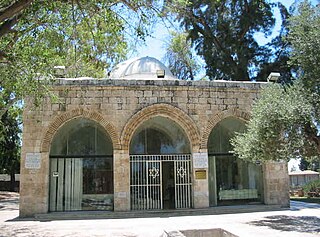Name
Despite his prominence, both parts of his name are uncertain: "Hananiah" and "Hanina" for the former, and "Akabia" and "Akiba" for the latter, appearing promiscuously in connection with one and the same halakhah. [1] However, there is reason to believe that "'Akabia" is his right patronymic, and that he was the son of Akabia ben Mahalalel. [2]
Akabia ben Mahalalel, was a Jewish religious teacher, probably of the second tannaitic generation.
Sometimes Hananiah (or Hanina) is cited without his patronymic. [3] Thus, he is easily confused with Haninah ben Ahi R. Joshua, who is also cited without his patronymic. To avoid such mistakes, one must observe the associates cited in the debate or statement. If these belong to the age of Rabbis Meir, Jose, and Shimon, Hananiah ben Akavia is meant; if they are of a former generation, R. Joshua's nephew is intended. [4]
Hanina(h) ben Ahi Rabbi Joshua, or Hananiah ben Ahi Rabbi Joshua, meaning 'Haninah/Hananiah son of the brother of Rabbi Yehoshua' was a Jewish Tanna sage of the third generation. Unlike many other Tannaitic sages, he is not recognized by his father's name, but rather with his uncle's name, R. Joshua ben Hananiah. He does not appear on the Mishnah at all. Sometimes he is recorded in baraitas as merely Hananiah, which can lead to confusion with Hananiah ben Akavia.

Rabbi Meir or Rabbi Meir Baal HaNes was a Jewish sage who lived in the time of the Mishna. He was considered one of the greatest of the Tannaim of the fourth generation (139-163). He is the third most frequently mentioned sage in the Mishnah. His wife Bruriah is one of the few women cited in the Gemara.
Jose ben Halafta or Yose ben Halafta was a tanna of the fourth generation. He is the fifth most frequently mentioned sage in the Mishnah. Of the many Rabbi Yose's in the Talmud, Yose Ben Halafta is the one who is simply referred to as Rabbi Yose.






